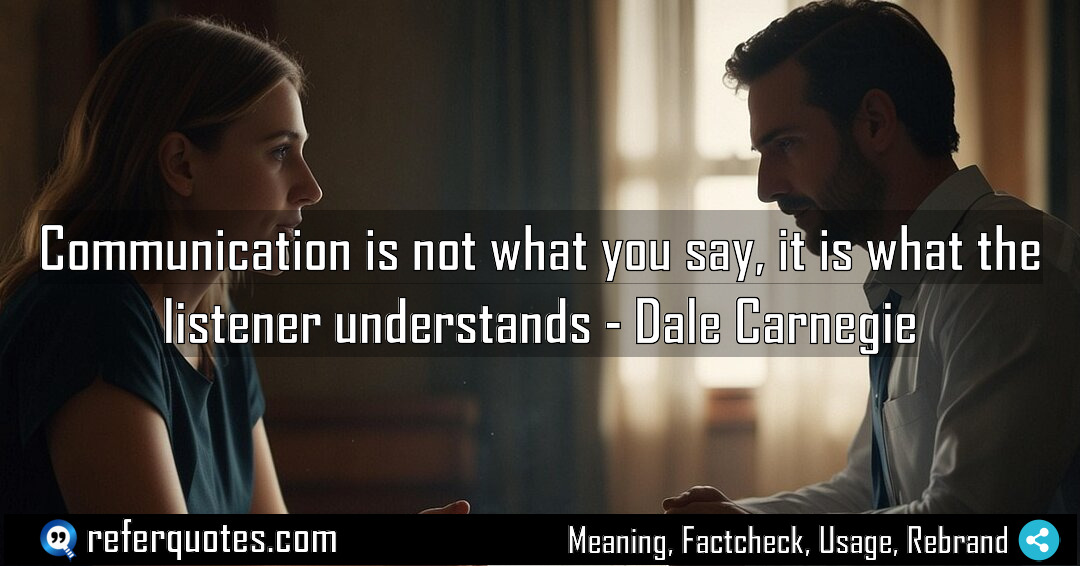Communication is not what you say, it’s what the listener understands. This simple shift in perspective completely reframes success in leadership and collaboration. It moves the responsibility from the speaker to the connection itself.
Share Image Quote:Table of Contents
Meaning
The core message is that the true measure of your communication isn’t your intent, but the impact it has. It’s not about the brilliance of your message, but its reception.
Explanation
Let me tell you, this is the one concept that changed everything for me. We get so caught up in crafting the perfect sentence, the perfect email, that we forget the other person is filtering it through their own experiences, biases, and mood. You can deliver a masterpiece of logic, but if it lands with confusion or defensiveness, you’ve failed. The real work isn’t in the talking; it’s in the ensuring of understanding. It’s about closing the loop.
Quote Summary
| Context | Attributes |
|---|---|
| Original Language | English (3668) |
| Category | Skill (416) |
| Topics | clarity (95), communication (196) |
| Literary Style | concise (408) |
| Emotion / Mood | realistic (354) |
| Overall Quote Score | 72 (65) |
Origin & Factcheck
This gem comes from the 1993 book “The Leader In You,” published in the USA. It’s often, and understandably, misattributed directly to Dale Carnegie himself. The book was actually written by Stuart Levine and Michael Crom, who were building on Carnegie’s legendary principles from the Carnegie & Associates organization.
Attribution Summary
| Context | Attributes |
|---|---|
| Author | Dale Carnegie (408) |
| Source Type | Book (4032) |
| Source/Book Name | The Leader In You (86) |
| Origin Timeperiod | Contemporary (1615) |
| Original Language | English (3668) |
| Authenticity | Verified (4032) |
Author Bio
Dale Carnegie(1888), an American writer received worldwide recognition for his influential books on relationship, leadership, and public speaking. His books and courses focus on human relations, and self confidence as the foundation for success. Among his timeless classics, the Dale Carnegie book list includes How to Win Friends and Influence People is the most influential which inspires millions even today for professional growth.
Official Website |Facebook | X | Instagram | YouTube |
Where is this quotation located?
| Quotation | Communication is not what you say, it is what the listener understands |
| Book Details | Publication Year/Date: 1993 (first edition) ISBN/Unique Identifier: 9781501181962 (Gallery Books 2017 reprint); also 9780671798093 (early Pocket Books hardcover) Last edition. Number of pages: Common reprints ~256 pages (varies by printing). |
| Where is it? | Chapter 2 Starting to Communicate, Unverified – Edition 2017, page range ~13–26 |
